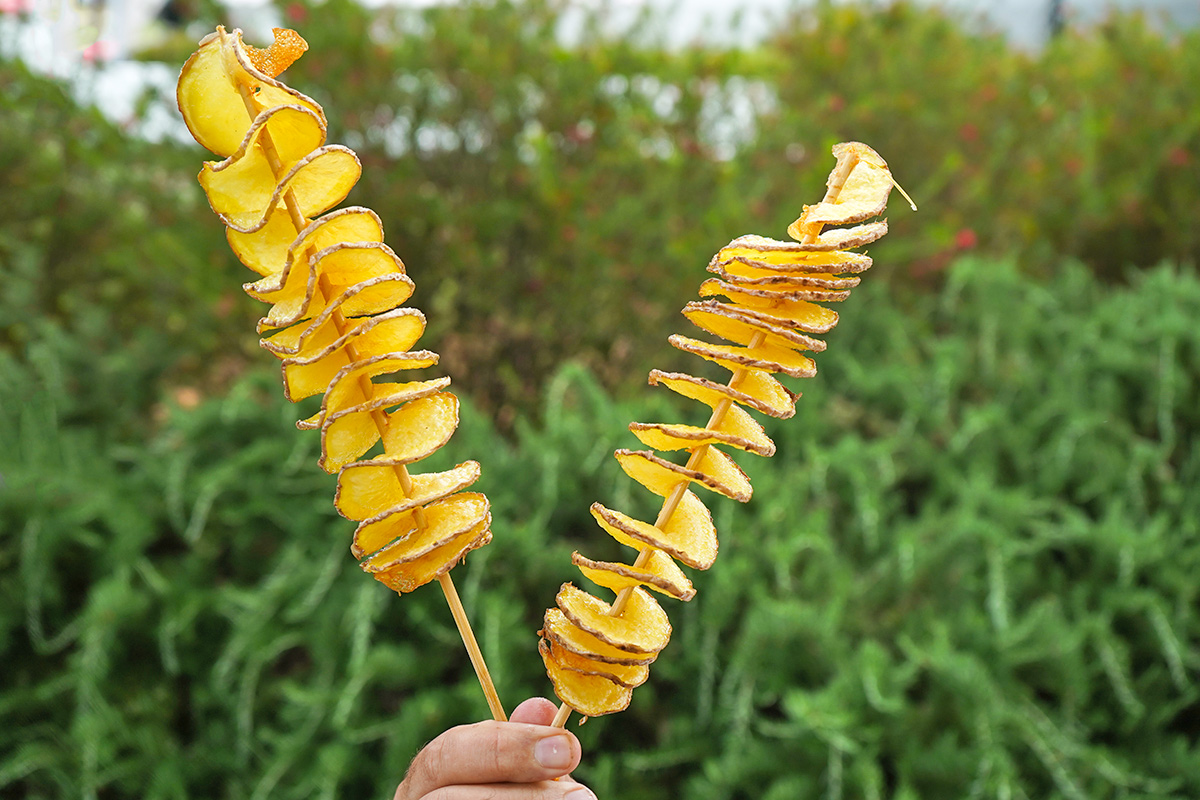When it comes to melons, it’s just like Forrest Gump said of life and boxes of chocolate: “You never know what you’re gonna get.” One will be lush and sweet, but the next might be bland and disappointing. Picking a good watermelon can be especially hard, because unlike with cantaloupes or honeydews, you usually can’t…
Some popular tips for choosing a ripe watermelon are downright frustrating. Thumping on it to hear if it “sounds right,” for example, assumes you already know what that right sound is. With that in mind, here are three reliable, easy-to-use tips to help you find the best watermelon in the bin at your local market.
1. Verify the Stem End Is Brown, Not Green
Unlike many other melons, watermelons don’t easily slip from the vine when ripe. However, the stem end — where they were attached to the vine — can be a good indicator of ripeness. It might look like a belly button or even have a bit of stem still attached, similar to a pumpkin.
Either way, take a close look at its color. If it’s green, that means the melon wasn’t fully ripe when harvested and therefore won’t be sweet and fragrant (the fruits don’t ripen after harvest). If it’s brown, your odds of getting a sweet melon are better.
More from our network
House Outlook is part of Optimism, which publishes content that uplifts, informs, and inspires.
2. Check for a Sizable Field Spot
If you look carefully at a watermelon, you’ll notice a clear top and bottom. The bottom, or belly, will usually have a pale patch called the “field spot” on its underside. In the case of picnic watermelons — those heavy, oblong-shaped ones — the spot can be quite large and is often flattened.
A well-ripened melon will have a distinct, buttery yellow field spot. If it’s white, the melon wasn’t ripe when harvested. Round melons (especially the smaller varieties) won’t always have a large or distinct field spot, but they tend to be sweeter anyway, so your odds are better to begin with.
3. Note Any Webbing Scars
Picture the fine mesh of pale-brown webbing that covers the surface of a cantaloupe. Now, take a look at the watermelons in the bin. Do you see that kind of webbing on the underside of any of them? If so, you’re in luck. Like the “warts” you sometimes see on winter squash or pumpkins, these are sugar spots.
Melons and squashes develop those blemishes when they’re rapidly producing sugars. If you see them, you’ve found a watermelon that’s as close to perfect as you’re going to get.



















